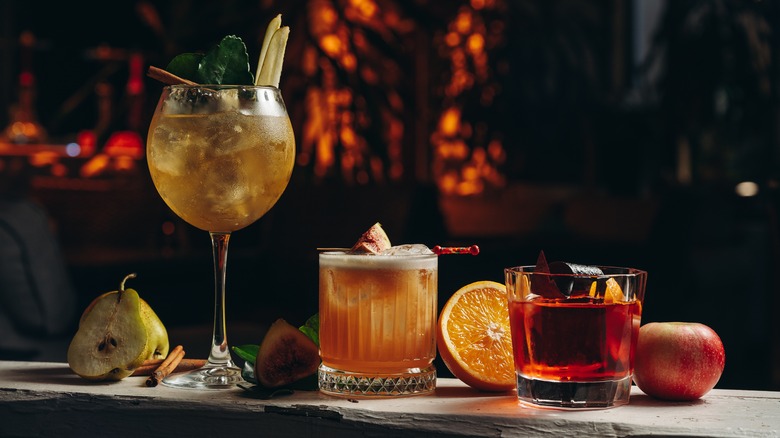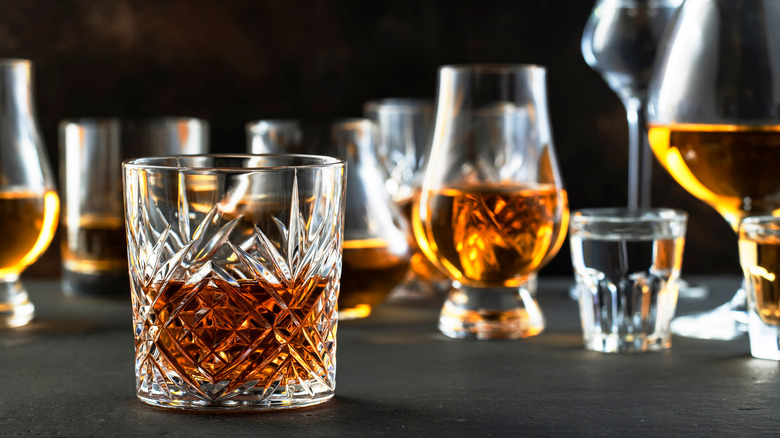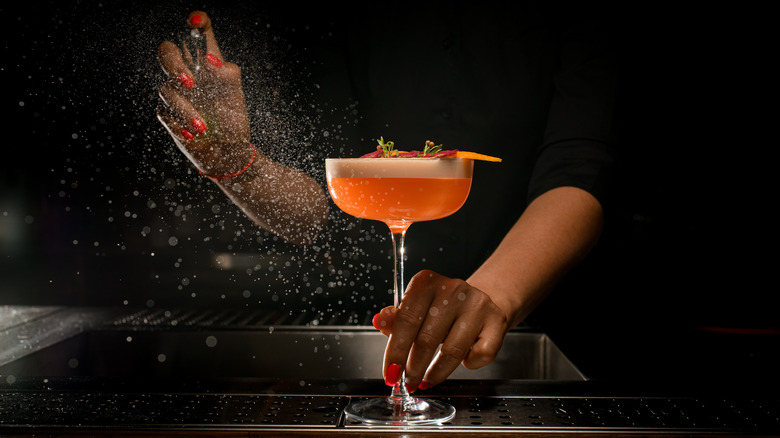What Is Up With The Term 'Top-Shelf' In Regard To Liquor?
When it comes to ordering a cocktail at a bar, you might find that some bartenders ask if you'd like a particular brand of liquor in your drink. For example, your vodka drink will taste much smoother if it's made with Grey Goose; you can also go with a middle-of-the-road brand, such as Tito's, or stick to whatever the bar's house brand is, meaning a cheaper option if you're not too picky about quality.
You've likely heard different phrases for categorizing these liquors, such as "top-shelf," "house liquor," or "well drinks." They're all different ways of noting how high-quality a liquor is. If you ever hear a bartender referring to "top-shelf" liquor, they're talking about premium spirits that are of the highest quality — a few examples are Grey Goose vodka, Johnnie Walker Blue Label whiskey, and Don Julio tequila. So, how did this popular phrase actually get its name?
'Top-Shelf' liquor refers to the highest-quality spirits
If someone offers you top-shelf liquor, you're about to enjoy an incredibly smooth drink. Top-shelf spirits are more expensive, and are often made with higher-quality ingredients, giving them a smoother flavor profile than the standard alcohol you'd get with a well drink. (A "well drink" cocktail refers to a drink made with a less expensive liquor.)
The phrase "top-shelf" has a simple origin: it refers to liquor that's placed on higher store shelves. Liquor stores often place the best-quality (read: most expensive) liquor at eye level so customers notice it and are more likely to put out the higher amount. The lower shelves house the less expensive liquor, which isn't as eye-catching. Of course, the phrase all comes back to liquor brands and stores wanting customers to spend as much money as possible. You might notice a similar setup in bars; they'll often showcase their premium spirits in view of the customer, while the lower-quality spirits are stored under the bar. This reasoning is two-fold: the patrons notice the expensive stuff, but mid-level is more commonly ordered, and keeping it beneath the bar means it's easily accessible for bartenders making plenty of drinks.
What qualifies an alcohol as 'top-shelf?'
While no rulebook determines which spirits are considered "top-shelf," it often comes down to quality, which affects flavor and price. Higher-quality spirits have high price points, and are made with the best of the best when it comes to ingredients. Johnnie Walker Blue Label, for example, has such a high price point because it's made with a rare whiskey blend. Johnnie Walker is extremely particular about the blends that qualify as Blue Label; only one in 10,000 whiskey casks will be of high enough quality for the distinction, which gives it a price tag of around $200 per bottle.
The general rule of thumb for whether to consider something "top-shelf" is if a standard bottle of a certain spirit runs at least $50. If you're willing to spend the extra cash on a top-shelf cocktail, it could be worth it to compare its smooth flavor to a run-of-the-mill brand.


